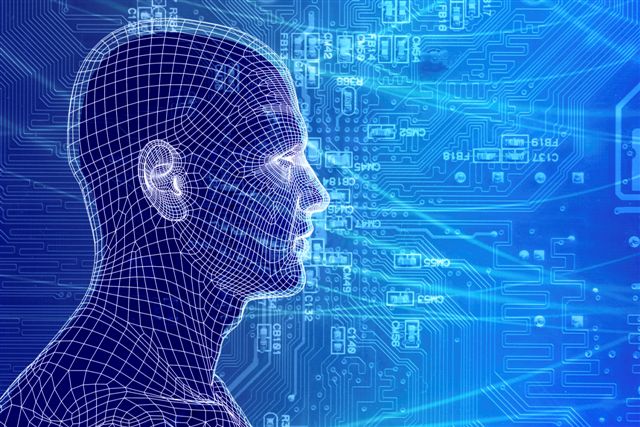Biofeedback and Anxiety

By Alan Brauer, MD
Psychiatric Times Feb 01, 1999, Volume: 16 Issue:2
Considered a “fringe” therapy 25 years ago, biofeedback has matured today to a modality much closer to mainstream treatment. Its value is accepted by a growing number of professionals, and it is covered by Medicare for some conditions, as well as by most health insurers.
Applied psychophysiology has yet to fulfill early enthusiastic predictions of the benefits of learning and applying self-regulatory skills. However, the field has amassed sufficient research and clinical data to justify an important secondary role in treating a number of specific disorders. Fueled by advances in technology and increasing interest in alternative therapies, biofeedback remains a dynamic force that continues to tantalize with possible-though as yet unproved-applications.
Biofeedback, also referred to as applied psychophysiological feedback, is the process of displaying involuntary or subthreshold physiological processes, usually by electronic instrumentation, and learning to voluntarily influence those processes by making changes in cognition. It provides a visible and experiential demonstration of the mind-body connection. Biofeedback is also a therapeutic tool to facilitate learning self-regulation of autonomic functions for improving health.
In a quiet room, seated in a comfortable chair with sensors attached to the skin, the trainee (patient) views a monitor. Advances in hardware and software technologies allow simultaneous monitoring of multiple modalities and the flexible shaping of visual and sound feedback to reinforce desired physiological states. Extensive data can be collected for immediate display with automatic storage for research.
There are six commonly employed feedback modalities:
- Electromyographic (EMG): Frontalis, masseter, trapezius and sternocleidomastoid are the most frequently monitored sites.
- Skin Conductance Level (SCL): Also referred to as Galvanic Skin Response (GSR). Finger electrodes register sweat gland activity.
- Thermal: Finger thermistors measure vasoconstriction by minute changes in peripheral blood flow.
- Respiratory: Strain gauges measure abdominal and thoracic excursions; a capnometer monitors exhaled CO2.
- Heart Rate (HR): Finger photoplethysmography registers rate and pulse volume.
- Brainwave/Neurofeedback (EEG): Multichannel equipment with more sophisticated software and new treatment protocols have replaced the simple single channel alpha training of earlier decades.
Biofeedback Applications
Used alone as relaxation therapy, biofeedback is as efficacious as other forms of relaxation training, such as hypnosis, progressive muscle relaxation or transcendental meditation. However, most applications of biofeedback are used as adjuncts to other types of therapy, treating physiological as well as psychological disorders.
Physiological disorders with credible research to support the ancillary use of biofeedback include headaches, chronic pain, rheumatoid arthritis, asthma, temporomandibular joint disorders, dysmenorrhea, epilepsy, hypertension, irritable bowel syndrome, intestinal motility, motion sickness, neuromuscular rehabilitation, Raynaud’s disease and fecal incontinence (Crabtree et al., 1995; Schwartz, 1995).
Biofeedback also seems to be a useful tool in the treatment of a broad range of problems commonly seen by psychiatrists. The adjunctive use of biofeedback is reasonably well-documented for the psychological disorders of anxiety and insomnia. Many forms of psychotherapy, including dynamic, behavioral and brief, appear to have enhanced efficacy when biofeedback-assisted. Both the patient and therapist benefit from a display of physiological responses, which can help identify resistance, denial and other defense mechanisms. Biofeedback monitoring can provide a uniquely vivid demonstration of the connection between thoughts and feelings. Brain wave feedback is showing promise in the treatment of attention-deficit/hyperactivity disorder, addictive disorders and posttraumatic stress disorder (PTSD).
Biofeedback and GAD
Anxiety in some form is a problem that all psychiatrists must deal with on a daily basis. It is one of the most frequently observed categories of emotional disorders in the American population and often seriously interferes with the quality of everyday life. All of the anxiety disorders are defined by the dual characteristics of physiologic hyperarousal and excessive emotional fear.
Biofeedback has demonstrated value for hyperarousal reduction training in generalized anxiety disorder (GAD) and exposure desensitization in panic disorder (PD) and PTSD.
Multimodal cognitive/behavioral therapy (CBT), which may include biofeedback, offers an equally effective alternative to medications, particularly for patients who do not respond well, who have a potential for dependency or who refuse prescription drugs. Optimum treatment outcome for GAD and PD is more likely to be achieved with a combination of pharmacotherapy and CBT.
Biofeedback is one of the most useful adjuncts in treating physiologic hyperarousal-both episodic and chronic-seen in anxiety disorders. It has also proved helpful for patients who are learning to reduce fearful anticipation triggers through cognitive/behavior therapies.
Biofeedback training is a part of the behavioral treatment, which includes relaxation training, because of its additional specificity. Biofeedback offers a nonpharmacological approach to direct symptom reduction and can be tailored to the individual patient’s psychophysiological profile. Those patients experiencing symptoms of muscle tension have EMG sensors attached to muscle sites showing the highest activity. Patients with mainly autonomic symptoms generally receive thermal, GSR, heart rate and respiration feedback. EEG feedback may be useful when an assessment documents brain wave pattern dysregulation.
Behavioral treatment may also include cognitive interventions to identify negative thinking, and to develop more appropriate assessment of life events. Where specific fears can be identified, behavioral fear reduction techniques, such as desensitization, modeling or flooding, may be used. Concomitant use of biofeedback may enhance the therapeutic effectiveness of these techniques. Like most behavioral treatments, biofeedback is most effective with patients willing to assume an active role in the treatment process, including home practice.
Most studies document improvement and significant symptom reduction in six to 12 sessions of biofeedback training, with more complex or chronic patients requiring more sessions. For instance, in 1993 Rice et al. studied 45 GAD subjects (38 of whom met the DSM-III criteria). The study subjects were randomized to four treatment groups: frontal EMG biofeedback, EEG alpha enhancement biofeedback, EEG alpha suppression biofeedback or a pseudomeditation control. Results were compared against wait-list controls. All treated subjects showed significant reductions in STAI-Trait Anxiety and psychophysiological symptoms on the Psychosomatic Symptom Checklist. Decreased self-report of anxiety was maintained at six weeks posttreatment.
